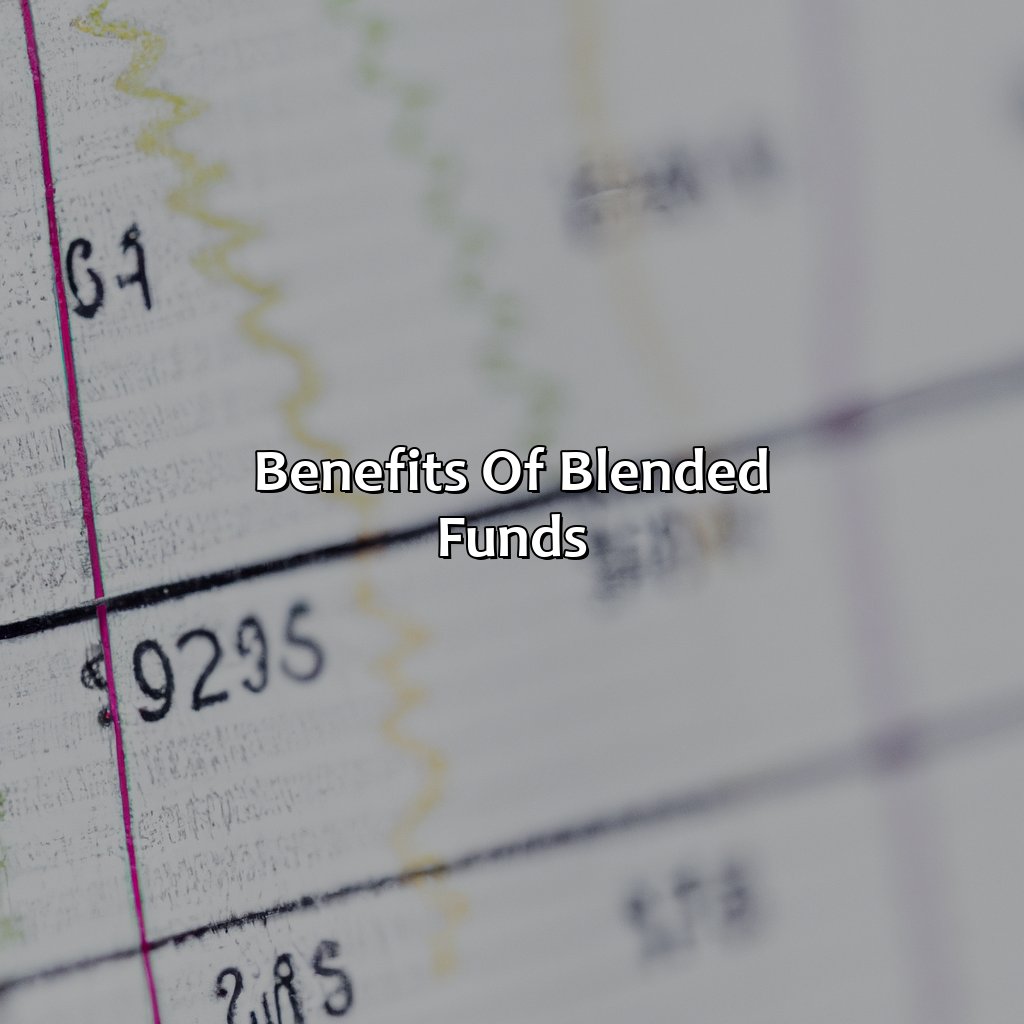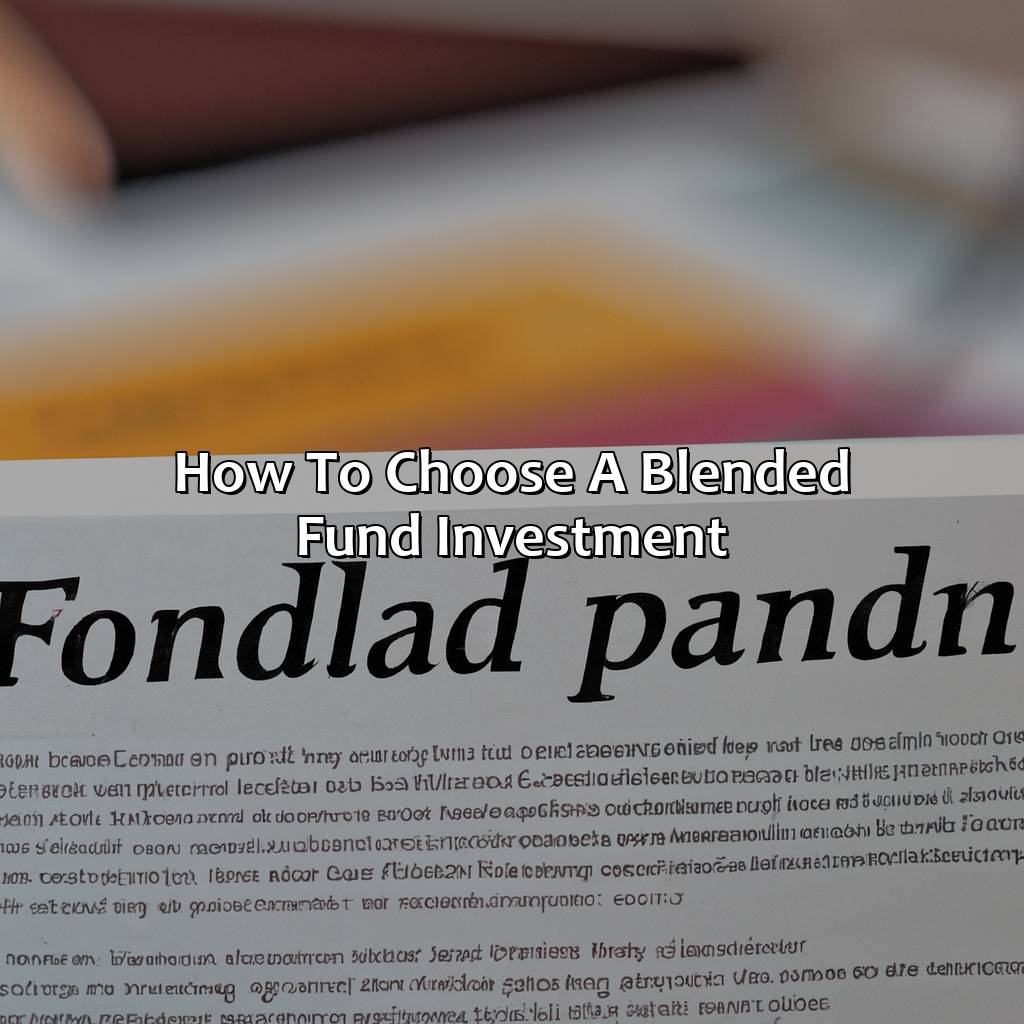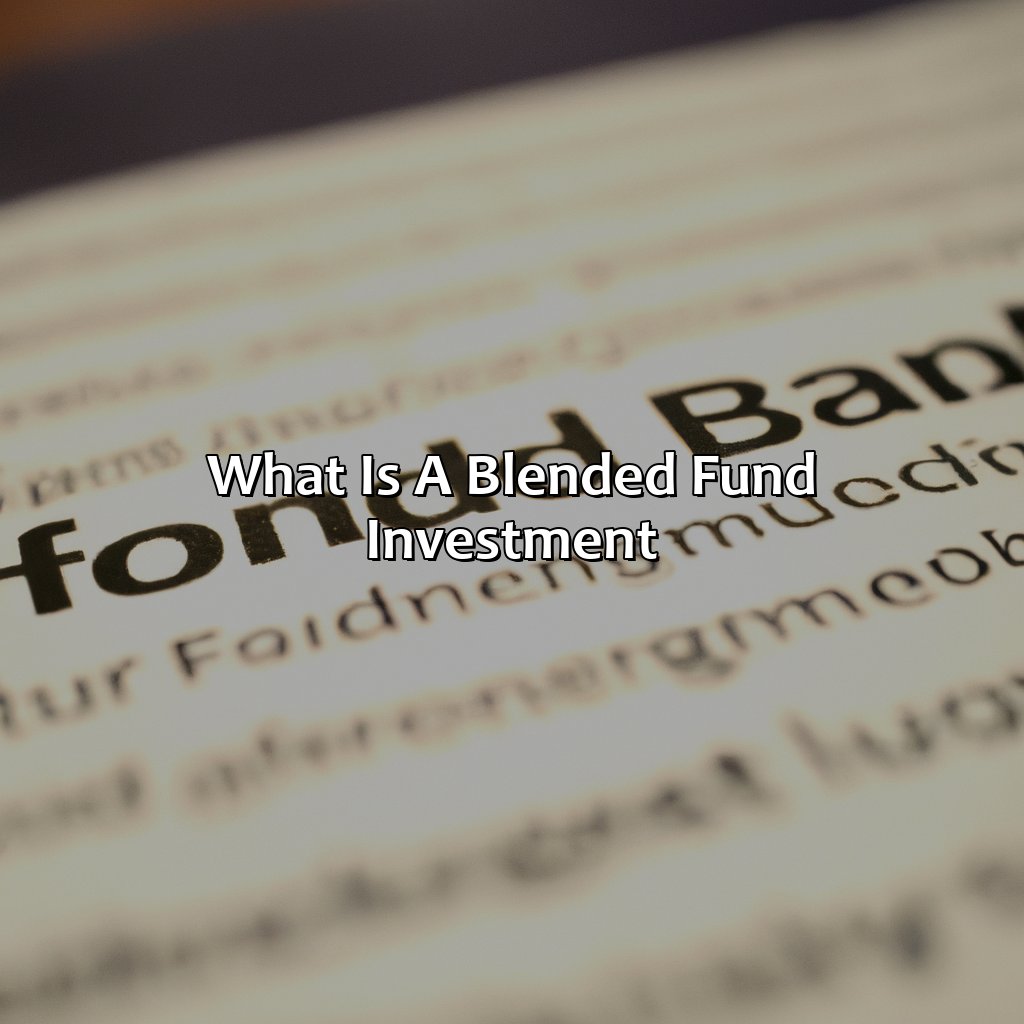What Is A Blended Fund Investment?
Key Takeaway:
- Blended fund investment is a type of investment that combines stocks, bonds, and other securities, providing investors with diversification and a mix of growth and income.
- There are different types of blended funds, including balanced funds, asset allocation funds, and target date funds, each with its own investment strategy and risk level.
- The benefits of blended funds include diversification, professional management, and convenience, but there are also risks involved, such as higher fees and less control over individual investments.
- To choose a blended fund investment, it’s important to consider your investment goals, review fund performance and fees, and check fund holdings and asset allocation.
- In conclusion, a blended fund investment can be a good choice for investors who seek diversification and professional management, but it’s important to do your research and choose the fund that best fits your investment goals and risk tolerance.
Are you taking the plunge into the world of investing, but uncertain where to begin? A blended fund investment offers a safe and rewarding option for novice investors. You’ll gain a diversified portfolio that takes the guesswork out of investing.
Types of blended fund investments
In the world of finance, a blended fund investment refers to a combination of two or more asset classes that are rolled into one. This article elucidates various kinds of blended funds with details on their performance, fees, and diversification. Below is a table summarizing these types of investments:
| Types of Blended Funds | Asset Class Combination |
|---|---|
| Balanced Funds | Stocks and Bonds |
| Target-Date Funds | Stocks, Bonds, and Cash |
| Asset Allocation Funds | Assets from Various Funds |
One notable aspect of blended funds is that they provide a diversified investment portfolio, which minimizes risks and can offer better returns over time. Additionally, the fees charged by these funds are usually lower than those in traditional investment strategies. It is advised to consult with a financial advisor before investing in blended funds to understand their suitability according to individual financial goals.
According to Financial News, “In 2019, blended fund investment recorded an all-time high in terms of market share, capturing more than 44% of total mutual fund/ETF flows“.

Image credits: retiregenz.com by David Arnold
Benefits of blended funds
Blended Fund Investments – Making the Best of Both Worlds
Blended fund investments offer investors the benefits of diversification and flexibility. Here are some advantages of blended fund investments that investors can leverage to make their investments deliver:
- Risk Diversification: Blended funds invest in a mix of assets, providing investors with exposure to a wider range of markets, sectors, and investment styles, lowering the overall investment risk.
- Professional Management: Blended funds are managed by professional portfolio managers who have experience in managing a variety of asset classes, optimizing returns while minimizing risk.
- Potential for Higher Returns: By combining growth-oriented and income-oriented investments, blended funds have the potential for higher returns while still providing income.
- Lower Costs: Blended funds typically have lower fees and expenses compared to investments in individual asset classes or actively managed funds.
Blended fund investments are not just about diversification and flexibility. They allow investors to combine the best of both worlds. With blended funds, investors can take advantage of a variety of investment styles, asset classes, and market sectors.
Investors should note that different blended funds may have different investment objectives, risk profiles, and management styles, so it is important to research their options and evaluate their investment goals carefully.
A real-life example of a successful blended fund is the Vanguard Balanced Index Fund. This fund seeks to provide long-term growth of capital and income by investing in a combination of the Vanguard 500 Index Fund and the Vanguard total bond market index fund. Over the past ten years, the fund has achieved an average annual return of around 8%, with low expense ratios of just 0.22%.
Overall, blended funds offer investors a way to achieve greater diversification, flexibility, and potential returns, making them a viable option for investors of all levels of experience and investment objectives.

Image credits: retiregenz.com by Adam Arnold
Risks of blended funds
The Potential Drawbacks of Investing in a Blended Fund
Diversification is a crucial aspect of portfolio management, and blended funds offer an enticing option to achieve that. While these funds combine a range of assets, including stocks, bonds, and ETFs, there are potential risks that investors should be aware of.
Blended funds are subject to market risks like any other investment type. The diversification can also lead to reduced returns in certain market conditions. There is also a possibility of high administrative fees, and the composition of the funds can change over time, impacting their performance.
Considering the potential drawbacks, it’s important to research and compare different blended funds before making an investment decision, and keep a close eye on their performance over time.
Investors should also keep in mind that a blended fund that suits their financial goals and risk profile today may not be appropriate in the future. Regular portfolio reviews can help manage risks and identify opportunities to maximize returns.

Image credits: retiregenz.com by Yuval Washington
How to choose a blended fund investment
Blended funds provide a diversified portfolio and a convenient way to invest in multiple asset classes with varying risk levels. To effectively choose a blended fund investment, consider the following:
- Identify the fund type that matches your investment goals and risk tolerance.
- Check the fund’s performance history and expense ratio to determine its profitability and expenses.
- Understand the asset allocation strategy and the fund manager’s investment approach.
- Consider the fund’s liquidity, minimum investment requirements, and tax implications.
- Determine whether the fund aligns with your ethical and sustainable investment preferences.
- Evaluate the fund’s diversification and whether it complements your current portfolio.
It is important to note that due diligence and research are necessary when making an investment decision. Consider consulting a financial advisor before investing.
Blended funds provide a balanced approach to investing, allowing investors to diversify their portfolios and potentially gain exposure to high-performing assets. However, before investing in a blended fund, it is crucial to conduct thorough research to make informed decisions and mitigate potential risks.
Don’t miss out on a chance to make effective investments that align with your goals and values. Take the time to research blended funds and consult with financial experts before making investment decisions.

Image credits: retiregenz.com by Yuval Arnold
Five Facts About Blended Fund Investment:
- ✅ A blended fund investment is a mutual fund or exchange-traded fund that invests in a combination of stocks, bonds, and other investments. (Source: Investopedia)
- ✅ Blended fund investments are often used to achieve a balance between growth and stability. (Source: The Balance)
- ✅ These funds can help diversify an investor’s portfolio and manage risk. (Source: NerdWallet)
- ✅ Blended funds can have a higher expense ratio than other types of funds due to their management fees. (Source: U.S. News & World Report)
- ✅ Blended funds are a popular choice for investors who want exposure to different asset classes without having to choose individual investments themselves. (Source: Forbes)
FAQs about What Is A Blended Fund Investment?
What is a blended fund investment?
A blended fund investment is a type of investment that combines both active and passive investment strategies. Blended funds can invest in a variety of asset classes, including stocks, bonds, and alternative investments.
How does a blended fund investment work?
A blended fund invests in a mix of active and passive funds. The active funds aim to outperform the market by selecting specific investments, while the passive funds aim to match the market by investing in a broad range of assets. The blend helps to diversify the portfolio and maximizes the potential for returns.
What are the benefits of investing in a blended fund?
Blended funds offer a diversified investment approach, which helps to reduce the risk of losses while maximizing the potential for returns. This type of investment also offers exposure to a wide range of asset classes, which can help to balance the portfolio in different market conditions.
Are blended fund investments suitable for everyone?
Blended fund investments can be suitable for investors with a range of risk tolerances and investment goals. However, as with any investment, it is important to carefully consider your individual financial situation, investment objectives, and risk tolerance before investing in a blended fund.
What are the fees associated with a blended fund investment?
Blended funds may have management fees, account fees, and other expenses associated with them. These fees can vary depending on the specific fund and investment strategy. It is important to understand the fees and expenses associated with a blended fund before making any investment decisions.
How can I invest in a blended fund?
Blended funds can be purchased through a brokerage account or through a financial advisor. It is important to research different blended fund options and consider your investment goals and risk tolerance before investing.


